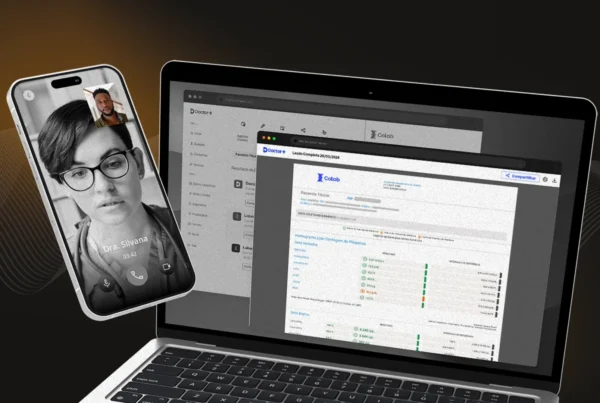Strategic use of data has become the norm when it comes to adapting to new technologies and innovations. However, many companies still find it difficult to gain valuable insights from the use of their information, as there are often discrepancies between the companies’ objectives and the quality of the data they produce. That’s where DataOps comes in.
Some believe that DataOps is a tool you buy to fix problems. Others believe it’s really about DevOps for data pipelines. This, in turn, leads to another misconception: thinking that DataOps is the sole responsibility of data engineers, when, in fact, it is everyone’s responsibility.
In this article, we’re going to debunk these myths (and others you may have) by taking a look at a DataOps definition, how it works, and basic principles. In the end, you will also see some tips on how to apply them in your company. Let’s go.
What is DataOps?
DataOps is not standalone software or technology, but a system of rules, policies, technologies, and people that prioritize data availability across an enterprise. Its mission is to create agile, scalable, and controllable data workflows for industries and teams.
This process involves an adequate structure of operations between Analytics, data scientists, and development engineers to deliver data analysis quickly and with a high level of quality.
In other words, you need to bring together a range of tools and various levels of teams across the enterprise on common ground to ensure the best organization and development of data.
How does it work?
DataOps uses different technologies, including Machine Learning and Artificial Intelligence (AI), combined with agile methodologies and a variety of data management tools to simplify the steps of processing, testing, preparing, deploying, and monitoring data.
DataOps also uses Statistical Process Control (known by its acronym SPC) to monitor the data pipeline. SPC includes statistical techniques that allow control over the data flowing through the pipeline, so that any problems, such as inaccurate or duplicate data, can be detected automatically.
What are the DataOps principles?
The three main approaches that form the foundation of DataOps are Lean Manufacturing, agile development, and DevOps. Let’s take a look at them one by one and see how they contribute to our understanding of DataOps principles and practical benefits.
Lean
Created by Toyota (which calls it the “Toyota Production System”), Lean Manufacturing says that a lean system quickly and efficiently produces good quality products. However, you may wonder: what can data analysis professionals learn from an approach that was born from car manufacturers?
At an abstract level, we can say that the data analysis pipeline is analogous to a manufacturing process. As in manufacturing, DataOps performs a set of operations and tries to produce consistent output at a high level of quality.
Lean teaches that employees need to relentlessly focus on improving process quality and reducing activities that do not add value.
Agile
According to the agile development methodology, if you divide a development process into small and discrete parts, you can reduce the chances that the process will be stopped, that is, left aside. This means that developing a more focused project can happen more quickly.
DevOps
DevOps, which consists of planning and producing a product or system, is one of the principles of DataOps. Your goal is to ensure that everything produced works as planned.
Following the DevOps approach, your team shouldn’t wait until the last minute to verify that the steps work. It is important to make testing an integral part of the production process of a product or system.
What are the differences between DevOps and DataOps?
DataOps has some similarities with DevOps in that both systems were designed to accelerate work cycles and both apply agile methodology to achieve this goal. However, the two terms have different meanings. While DevOps is a methodology that brings teams together to make software development and delivery more efficient, DataOps focuses on breaking down silos between data producers and consumers to make data more reliable and valuable. DevOps uses Agile to bring together software development (Dev) teams with operations (Ops) teams and accelerate build cycles. DevOps breaks work into short sprints so teams can collaborate on the most pressing elements at the same time.
How to apply DataOps in the company?
Some practices are indispensable in implementing DataOps. Check out some tips below.
Embrace a change in organizational culture
One of the keys to implementing DataOps is the effective integration of people, processes, and tools to transform the enterprise into a single organization. As such, a change in organizational culture is considered the backbone of DataOps, and changing your team’s culture will help address the challenges.
Make the process end-user centric
Businesses need to adapt to fluid and ever-changing customer demand to provide services/solutions that exceed expectations in terms of time and performance.
Automate whenever possible
Automation allows for the quick execution of processes. It can be extended to code development, database changes, and test execution, for example. This can save valuable resources in terms of cost and time, as well as efforts for developers, testers, and operations personnel.
Define the roles of each employee
To initiate a data-driven culture, leaders driving Digital Transformation must define the roles played by each employee and how their contributions reflect on established goals for successful DataOps practice.
Different teams across the company are involved in producing and using data. However, the data architect, data engineer, data analyst, and end-user are the ones who play a vital role in DataOps practices, from collecting raw data to transforming it into actionable insights.
Count on strategic partners
Your company can benefit from the credibility and expertise of companies that have been in the technology market for a long time, especially if there is a need to optimize or replace technologies to streamline internal operations.
When talking about partners to boost Digital Transformation in companies, BRQ Digital Solutions is a reference. With a specialized team, BRQ has been promoting the digital transformation of companies in a personalized way, with the development of new solutions following the best data-driven practices.
In this post, we saw what it is and how the implementation of DataOps works. Don’t waste time and bet on this system of standards, technologies, and people to cut costs, increase employee satisfaction and make your data management more agile.
Enjoyed learning more about DataOps?
Read more on our blog, subscribe to our Newsletter, and discover BRQ’s solutions!





